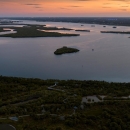Laws and Regulations
The U.S. Fish and Wildlife Service follows Federal laws, policies, and treaties passed throughout history. The passage and creation of laws and regulations, such as the National Wildlife Refuge System Improvement Act, ensures a strong and singular wildlife conservation mission.


